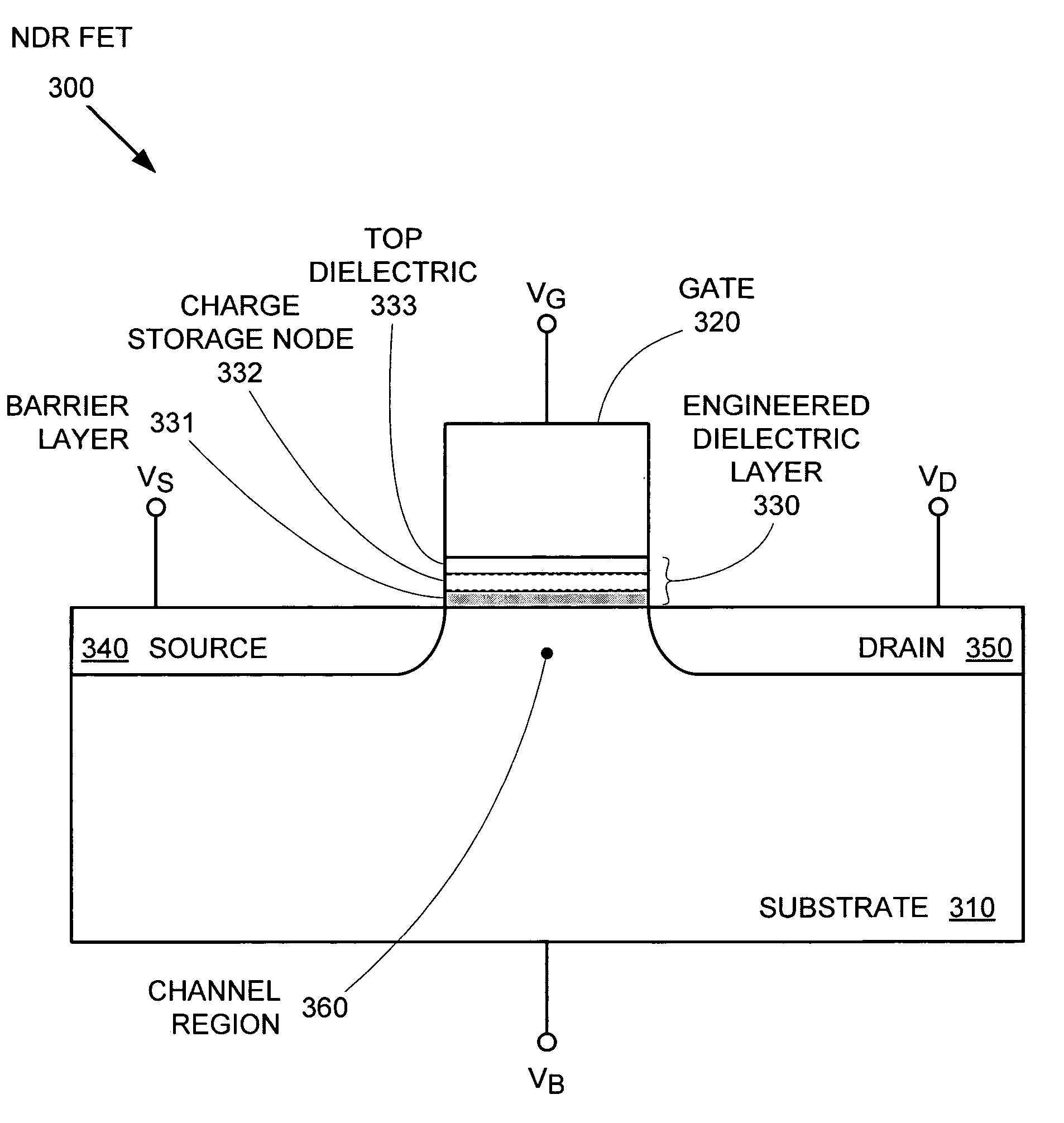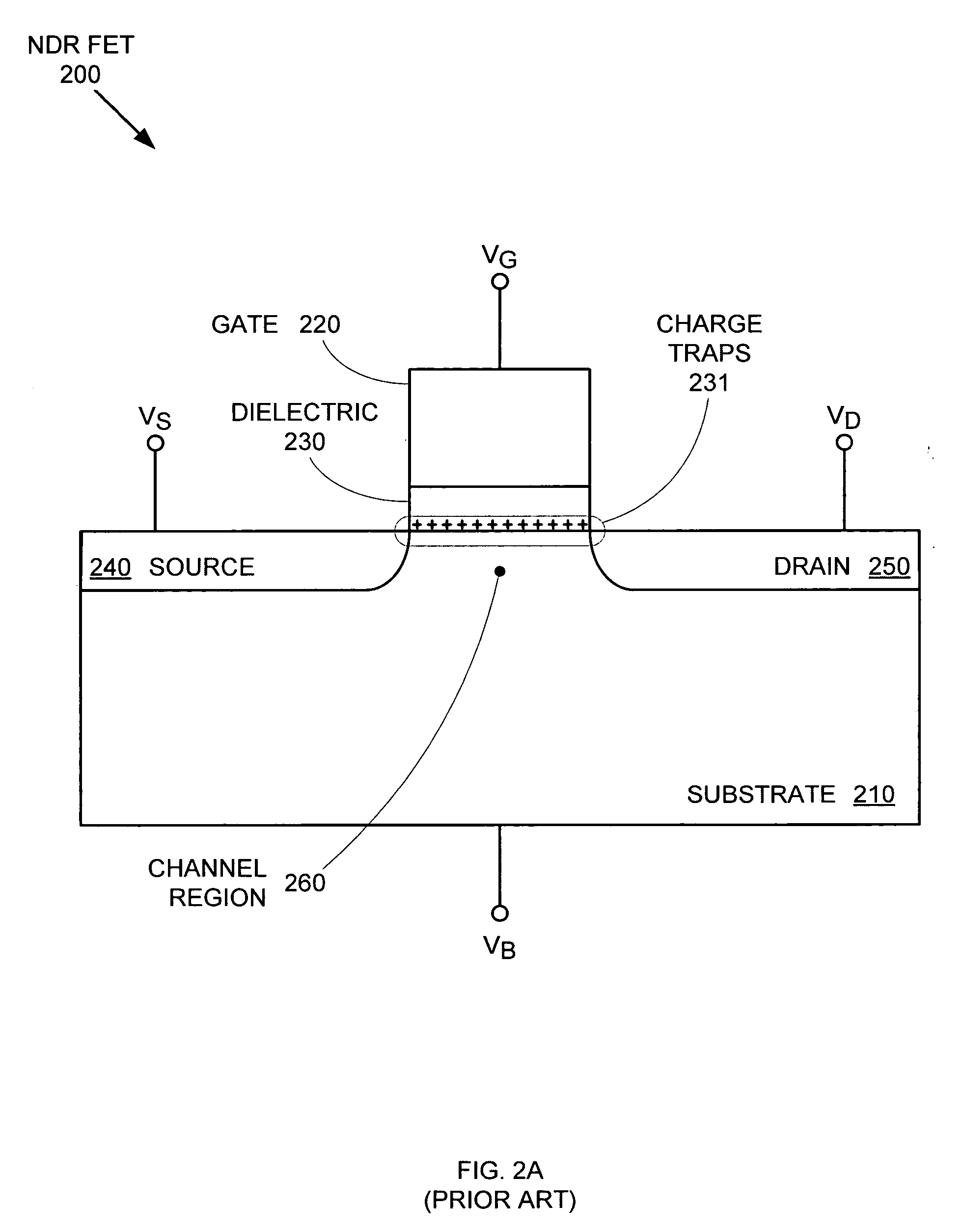Engineered barrier layer and gate gap for transistors with negative differential resistance
a technology of negative differential resistance and gate gap, which is applied in the field of metal-insulator-emiconductor devices, can solve the problems of difficult accuracy control of charge trap distribution, inaccurate control of pvr, ndr voltage, and/or ndr switching speed values of ndr transistors, etc., and achieve accurate control, accurate control, and/or optimized device characteristics
- Summary
- Abstract
- Description
- Claims
- Application Information
AI Technical Summary
Benefits of technology
Problems solved by technology
Method used
Image
Examples
Embodiment Construction
[0023] In a negative differential resistance (NDR) transistor, it is desirable to be able to optimize the device characteristics, such as peak-to-valley ratio (PVR), NDR voltage, for different applications / technologies. In conventional NDR transistors, these characteristics are controlled by the distribution of charge traps at the gate dielectric / channel region interface. However, in certain circumstances, accurately controlling the charge trap distribution, and hence, accurately controlling the PVR, NDR voltage, and / or NDR switching speed values for the NDR transistor, can be difficult. By replacing the charge traps with a barrier layer and a charge storage node (layer) in the gate dielectric, greater manufacturing flexibility and improved control over NDR transistor characteristics can be achieved. As a separate approach, by introducing a gap between the source-channel junction and the gate, the electric field within that gap can be significantly enhanced, thereby improving the PV...
PUM
 Login to View More
Login to View More Abstract
Description
Claims
Application Information
 Login to View More
Login to View More - R&D
- Intellectual Property
- Life Sciences
- Materials
- Tech Scout
- Unparalleled Data Quality
- Higher Quality Content
- 60% Fewer Hallucinations
Browse by: Latest US Patents, China's latest patents, Technical Efficacy Thesaurus, Application Domain, Technology Topic, Popular Technical Reports.
© 2025 PatSnap. All rights reserved.Legal|Privacy policy|Modern Slavery Act Transparency Statement|Sitemap|About US| Contact US: help@patsnap.com



